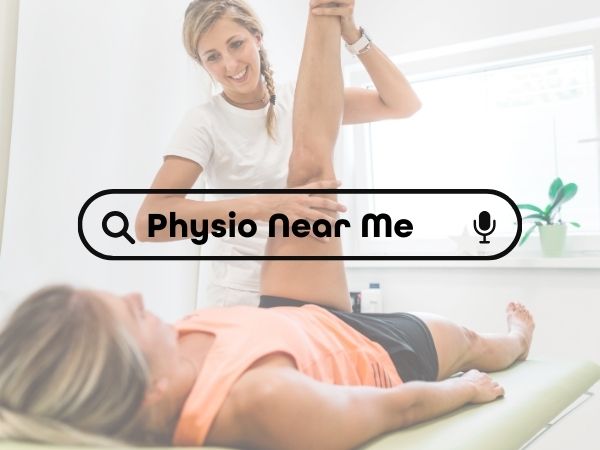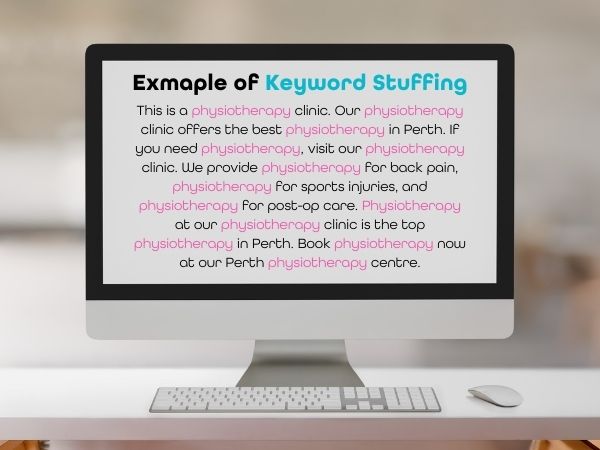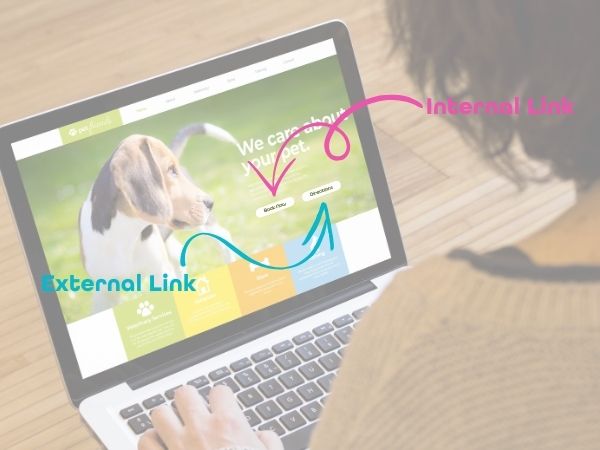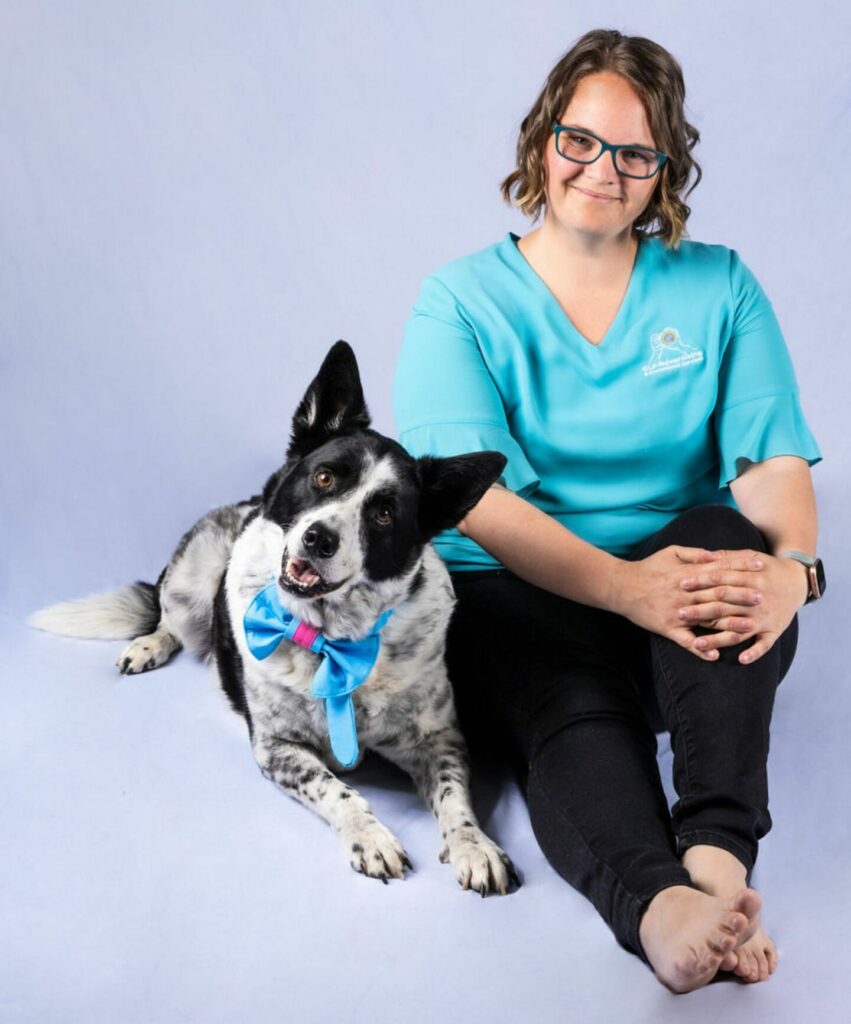SEO Best Practices for Medical Websites in Australia: A Detailed Guide
(Search Engine Optimisation) SEO for medical websites is essential for improving online visibility, attracting more patients, and staying compliant with AHPRA’s strict healthcare advertising regulations.
Whether you’re running a GP clinic, dental practice, specialist centre, or allied health service like physiotherapy, this guide outlines proven SEO strategies to help you grow ethically and sustainably. We’ll use physiotherapists as examples to demonstrate practical applications across the wider medical industry.

1. Local SEO for Medical Practices in Western Australia
Most patients search for terms like “doctor near me,” “bulk billing GP,” or “physiotherapist in Perth when looking for care. That’s why local SEO is critical for every healthcare provider.
How to Optimise for Local SEO

Google Business Profile (GBP):
- Claim your listing at google.com/business
- Ensure your Name, Address, and Phone Number (NAP) are consistent everywhere.
- Use categories like “Physiotherapist,” “Dental Clinic,” “General Practitioner.”
- Upload quality images of your clinic, treatment rooms, and team. (This builds trust – don’t ever use AI images)
- Encourage patient reviews (never offer incentives – per AHPRA rules).
Local Directories & Citations:
- Get listed on HotDoc, HealthShare & White Pages.
- Keep all directory info aligned with your GBP.
Geo-Targeted Keywords: Use location-specific phrases such as:
- “Women’s health physiotherapist in Perth”
- “Children’s dentist in Mandurah”
- “Skin cancer clinic in Harvey”
Example: Instead of “Benefits of Back Pain Treatment,” write “Benefits of Back Pain Treatment with a Physiotherapist in Perth”.
Why Local SEO Matters in a Broader Strategy
Local SEO ensures your medical practice appears in front of people actively searching for services in your area, making it one of the most effective ways to attract new patients.
However, it’s just one part of a wider digital marketing strategy. To see real results, it should be supported by quality content, consistent branding, paid search (if applicable), and a compliant, user-friendly website that builds trust and converts visitors into bookings. Local visibility gets people to your site; what you do next keeps them there.
Want to learn how to create AHPRA-compliant content that supports your rankings? Read our guide to the Healthcare Content Marketing Guide and build long-term organic visibility.
2. On-Page SEO for Medical Websites in Australia
On-page SEO is all about how well your individual website pages are structured to rank in search engines like Google. It focuses on content clarity, relevance, and technical optimisation, all of which are critical for being found online when patients search for the services you provide.
SEO Fundamentals
Meta Tags
These are what users see in search results.
- Meta Title: Keep it under 60 characters. Include your service, location (if relevant), and the core problem you solve.
- Example: “Sports Physiotherapy Subiaco | Supporting Athletes & Injuries”
- Meta Description: 155–160 characters. Describe the page’s benefit using relevant keywords.
- Example: “Recover faster with expert physiotherapy in Subiaco. We help with sports injuries, rehab, and mobility. Book your appointment with our friendly physios today.”


Header Tags (H1–H3)
Use H1 for the main heading, and H2/H3s for structure and readability.
Example:
<h1>Top Physiotherapists in East Perth for Post-Surgical Rehab</h1><h2>What Physiotherapy Services Do We Offer?</h2><h3>How to Book a Physio Session in Victoria Park</h3>
Keyword Placement
Use primary and secondary keywords naturally in the headings and body copy.
🚫 Pro Tip: Avoid keyword stuffing; Google’s AI-based algorithms reward readability and intent, not repetition.


Structured Data / Schema Markup
Help search engines categorise your content correctly using Schema.org:
Example:
json{
"@context": "https://schema.org",
"@type": "Physiotherapy",
"name": "Restore Movement Physio Clinic",
"address": {
"@type": "PostalAddress",
"streetAddress": "123 Physio Lane",
"addressLocality": "Kewdale",
"addressRegion": "WA",
"postalCode": "6105",
"addressCountry": "AU"
},
"telephone": "+61 8 9700 1239"
}Internal Linking
Link to other relevant pages on your site using natural anchor text.
Example: Explore our rehabilitation programs for patients recovering from surgery.
Internal Linking Tip: The ‘rehabilitation programs’ link should take your readers to the rehabilitation programs section on that website.
External Linking
Link to trusted, high-authority external sources to support your content and boost SEO credibility. This helps Google understand that reputable sources back your information and improves user trust.
Example: “For general post-operative care advice, refer to the official guidelines on Healthdirect Australia.”
External Linking Tip: The Healthdirect Australia link should take them directly to the information they are looking for; the fewer clicks, the better.
💡 Pro Tip for Medical Websites:
Only link to non-commercial, evidence-based sources such as government health sites, universities, or professional medical associations to stay AHPRA-compliant and avoid promoting unapproved and misleading treatments and information.

3. GEO Optimisation: Generative Engine Optimisation for Healthcare Websites
Generative Engine Optimisation (GEO) is the next evolution in SEO. It focuses on optimising your content for AI-powered search results, such as Google’s Search Generative Experience (SGE), Bing Chat, and AI assistants (e.g., Siri, Alexa, and ChatGPT). These engines don’t just pull up a list of links; they summarise, answer, and recommend based on context, authority, and content clarity.
For example, when a user asks, “What’s the best physio clinic near Subiaco for post-surgery rehab?” Generative AI may reference your clinic directly if your content is well-structured, relevant, and compliant.

Key GEO (Generative Engine Optimisation) Tactics
Use Conversational Queries in Your Content
Write the way people ask questions aloud.
Example: “What’s the best way to recover after ACL surgery with a physio?”
Create Clear, Structured Content Blocks
Use headings, bullet points, FAQs, and short paragraphs. AI engines prefer clean formats that they can extract and summarise.
Include Direct Answers for Featured Snippets
Lead with answers, then explain. Example: Can physiotherapy help with post-surgical recovery? Yes, physiotherapy plays a key role in restoring strength, flexibility, and function after surgery.
Implement Schema Markup
Use FAQPage, HowTo, or MedicalClinic structured data to help AI understand and present your content in rich results.
Keep Content Authoritative, Compliant, and Helpful
AI engines favour accurate, ethical content from trusted sources. For healthcare, that means following AHPRA guidelines and citing reputable references like Healthdirect Australia or government health bodies.
How SEO and GEO Work Together — With Help from AI
- SEO (Search Engine Optimisation) gets you ranked in traditional search engine results, such as Google.
- GEO (Generative Engine Optimisation) gets you recommended or quoted in AI-generated summaries and voice search.
- AI bridges them both, prioritising content that is optimised for intent, structure, and authority.
Example: A page titled “How Long Does It Take to Recover After Knee Surgery?” may appear in both Google’s top links (SEO) and be summarised by AI chat tools (GEO), if the content is well-written and structured.
🧠 Learn more about this by reading our Blog: E-E-A-T and You: Building Trust in a World of AI-Generated Content
4. Mobile Optimisation: Prioritise User Experience (UX)

Why It Matters:
- More than 70% of Australians use smartphones to search for healthcare services.
- Google uses mobile-first indexing, meaning your mobile site gets ranked first.
So, if you do not have a user-friendly, mobile-optimised website, you will not rank at all! Essentially, you will be Black Listed!
Tips for Mobile SEO:
- Use a responsive website design or a builder that enables you to customise per device! (Note: This takes more work, so we highly recommend a responsive design)
- Avoid large pop-ups that interfere with navigation
- Ensure buttons and text are mobile-friendly
- Use Google’s Mobile-Friendly Test
📌 Pro Tip: A physio clinic’s mobile site should allow quick tap-to-call and easy online booking for new clients.
5. Site Speed & Security: Build Trust with Patients

Why It Matters:
- Google rewards fast websites.
- Slow websites (over 3 seconds) have higher bounce rates.
- (Why: Ask yourself this, if a website takes ages to load, what do you do?; Do you wait for it to load, or do you click back and go to the next site that offers the same information? – Most people click back and go elsewhere (We are all busy people.) The clicking back is people bouncing from your site. aka – bounce rate.
- HTTPS is a basic requirement for protecting data; however, with medical websites, you are required to have higher levels of security because you are collecting patients’ personal information, and generalised information is not something we can give on this. Contact Us for more information on Media Website Security.
How to Optimise:
- Choose a reliable local hosting
- Compress images using tools like TinyPNG
- Enable browser caching and use a lightweight theme
- Ensure your website is HTTPS-secured with an SSL certificate
🛠️ Free Tool: Google PageSpeed Insights helps you test speed and get recommendations.
5. Track Performance Using Google Search Console
Google Search Console (GSC) is an essential tool to track how well your website performs in Google search.
How to Use GSC for Medical Clinics:
- See what keywords drive traffic (e.g., “pelvic floor physio Perth”)
- Identify indexing errors or broken links
- Monitor mobile usability
- Track click-through rates (CTR) and impressions
Example: If your “sports physio in Melville” page isn’t ranking, GSC can show where it appears in search and how to optimise it.
Setup Steps:
Final Thoughts: Boost Visibility Across All Healthcare Fields

Whether you’re a physiotherapist, GP, dentist, psychologist, or specialist, SEO for medical websites is your clinic’s long-term growth engine. When done consistently and ethically, content marketing can outperform paid ads and help patients find and trust your services.
Focus on:
- 📍 Local SEO (with geo-targeted keywords)
- 🛠️ On-page optimisation (meta tags, headers, structure)
- 🤖 GEO (Generative Engine Optimisation)
- 📱 Mobile-friendly design
- ⚡ Site speed & security
- 📊 Google Search Console tracking
- 📋 Compliance with AHPRA guidelines
📢 Need help with healthcare SEO? We create AHPRA-compliant SEO strategies that help your practice find you online without risking penalties.
Contact us today for a tailored Marketing plan for your clinic!
Frequently Asked Questions (FAQ’s)
SEO for healthcare websites in Australia requires compliance with AHPRA advertising guidelines. This means avoiding testimonials, misleading claims, or promoting unverified treatments. Healthcare content must be factual, ethical, and patient-friendly, while still targeting relevant search queries to rank in Google.
It’s recommended to review and update your SEO strategy every 3 to 6 months. New keyword trends, Google algorithm updates, and changes in your clinic’s services or locations all impact visibility. Keeping your site content fresh and technically sound ensures long-term performance.
Paid ads can offer quick visibility, but SEO provides sustainable growth and higher trust over time. In healthcare, where credibility is key, patients often trust organic search results more than ads. Ideally, combine both to support short-term and long-term marketing goals.
Yes, schema markup helps search engines understand your website’s purpose, location, and services. For smaller clinics, using structured data like FAQPage or MedicalClinic can improve visibility in search results and AI-driven platforms like Google SGE or voice assistants.

Author Bio
Ellie Clare is a digital marketer, content strategist, and the founder of CLP Advertising & Photography Services. Specialising in SEO, social media strategy, content marketing, and visual storytelling, Ellie helps businesses grow with authentic, data-driven marketing that actually connects.
After a life-changing accident led her to start CLP, Ellie turned a personal challenge into a purpose-led career. Her mission is to make the internet a better, more human place; one piece of content at a time. She’s passionate about helping others find their voice online, and her efforts have earned her multiple local business awards.
When she’s not working with clients or behind the lens, you’ll find her hiking, mountain biking, or kayaking with her loyal sidekick, Monty, the retired working dog who still has plenty of energy to spare.